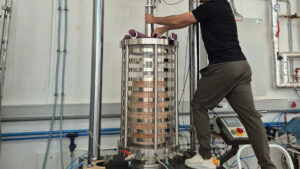Abstract/Description
Landslides are one of the most prevalent and destructive natural hazards in mountainous regions, causing significant damage to infrastructure, loss of life, and economic disruptions. Their frequency and severity are particularly high in ecologically fragile regions like the Himalayas, where fatal landslides commonly occur during the monsoon season. Landslide susceptibility maps are essential tools for effective land-use planning, disaster management, and risk mitigation in such regions. This study aimed to investigate and identify landslide-prone zones in the Himalayas using spatially explicit models—the Evidence Belief Function (EBF), Frequency Ratio (FR), and Shannon Entropy (SE) focusing on the Pithoragarh district of Kumaon Himalayas. A comprehensive landslide inventory was developed, which identified 366 landslide events; 70% (256) of these events were utilized for model training/testing, while the remaining 30% (110) were used for validation. The study identified and analyzed 14 key landslide conditioning factors, including topography, geology, land cover, and precipitation data. These factors were extracted from spatial databases and used to assess the relationship between environmental conditions and landslide occurrence. The results revealed that the moderate, high, and very high landslide susceptibility classes of the EBF and FR models covered approximately 39.04%, 33.10%, and 13.47% of the study area, respectively, with higher susceptibility areas concentrated along roads, especially in the Berinag, Didihat, Gangolihat, and Pithoragarh tehsils in the southern part of the district. Model performance was validated using the Receiver Operating Characteristics (ROC) and Area Under the Curve (AUC) metrics, which correlated well with landslide data. The EBF, FR, and SE models provided success rates of 73.36%, 81.1%, and 79.3%, respectively, and predictive rates of 56.6%, 61.5%, and 60.0%. The findings demonstrate that these methodologies are proficient in predicting and mapping landslide susceptibility, providing essential insights for disaster risk management and planning in the Himalayas.


